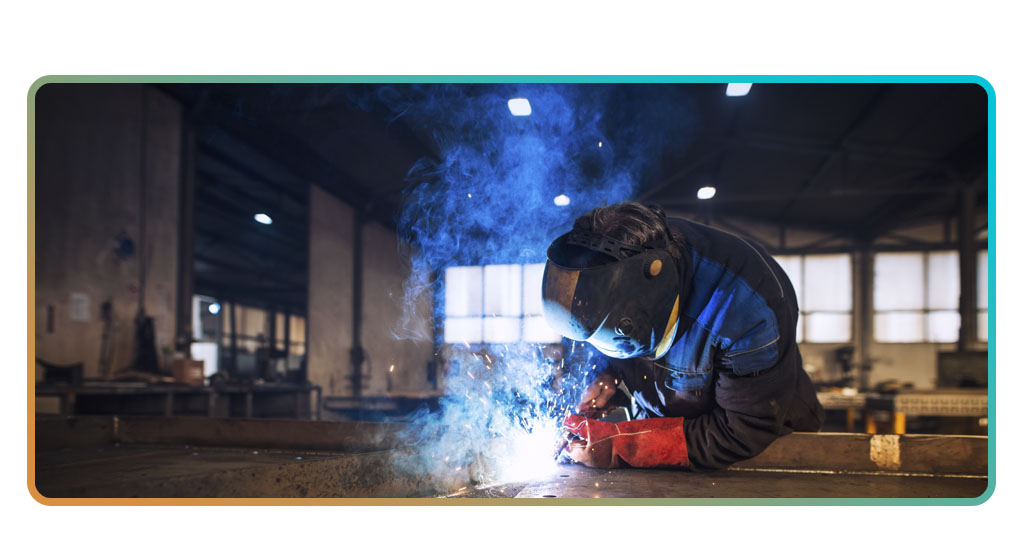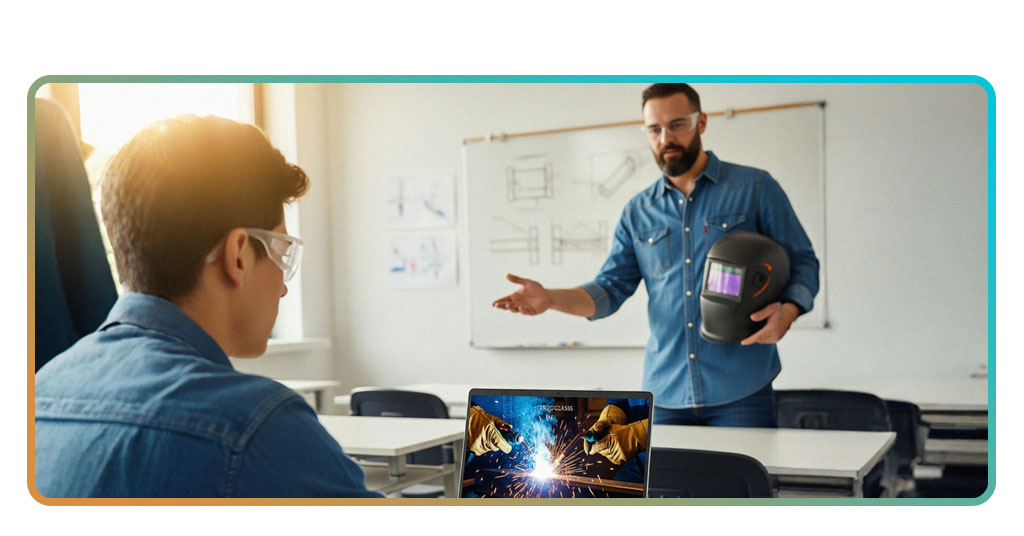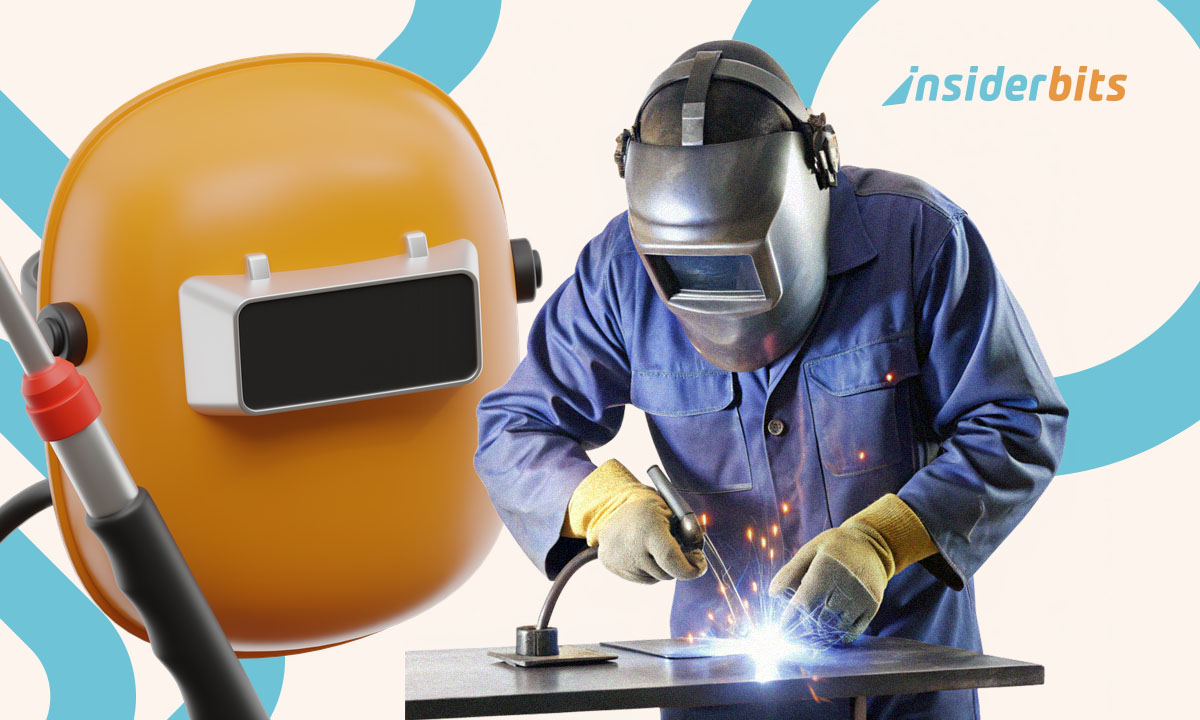Learning a trade can open career doors, and welding courses offer practical skills that match high demand across industries, making them an attractive option for those seeking stability.
From shipyards to automotive plants, skilled welders sustain vital projects. Training is available online or in person, with certifications aligned to regional opportunities and industry needs.
This guide by Insiderbits outlines training paths, specializations, and formats worth considering. Keep reading to discover opportunities leading to steady work and strong earnings in welding.
En rapport : Carpentry Courses Online: Learn Woodworking Step by Step
Which welding type should you learn first?
Welding is a skill-based trade with different paths depending on your goals. Each method has its own tools, techniques, and career possibilities, making your first choice important.
Some styles are easier for beginners. Understanding your interests and available opportunities will help you decide where to begin your training with welding courses.
MIG, TIG, Stick: which one fits your goals
MIG welding is often the first choice for beginners. It’s faster to learn, widely used in industries, and ideal for those who want quick access to job opportunities.
TIG welding requires more precision and patience. It’s slower but produces cleaner results, making it perfect for those who care about detail, quality, and working with thinner metals.
Stick welding is rugged and great for outdoor work. It’s mostly used in construction and repair jobs, especially in remote or challenging environments where equipment needs to be portable.
Welding types in demand by industry: automotive, construction, naval
Automotive welding relies heavily on MIG for its adaptability. Many welding courses cover this method, preparing students for factory and repair shop roles requiring quick, precise work.
Construction projects usually require Stick welding for structural strength. It’s ideal for joining heavy steel in buildings, bridges, and pipelines where durability and flexibility are critical on-site.
Naval and shipbuilding industries use both TIG and Stick welding. Working with thick materials and harsh conditions demands precision and strength, especially for underwater applications.
How long it takes to master each welding style
Most people can learn MIG welding basics in a few weeks. It’s pretty straightforward, so students feel confident quickly and ready to apply for beginner-level welding positions.
Stick welding takes longer to control because of its manual nature. Expect a few months to gain comfort, especially when working on vertical or overhead joints in difficult environments.
TIG welding requires the most time to master. You’ll need several months or more of hands-on practice. It’s often taught in advanced welding courses for experienced learners.
What employers look for in entry-level welders
Hiring managers value reliability, attention to safety, and basic skills in MIG or Stick welding. Certifications help, but a strong work ethic can make a big difference too.
Being trainable is key. Employers prefer workers who are open to learning and can adapt to different projects or welding styles depending on the needs of the business.
A good attitude and basic technical understanding are sometimes more valuable than experience. Showing initiative and completing hands-on training can help you stand out.

Certificate vs. apprenticeship: which is better?
Choosing between a welding certificate and an apprenticeship depends on your goals, budget, and timeline. Both can lead to skilled jobs, but the path and experience are very different.
A certificate gives fast, structured training with a clear finish line. Apprenticeships offer paid work and mentorship but take longer to complete. Each has pros depending on your situation.
Some start with short welding courses to qualify faster while others prefer learning directly from pros in the field. Understanding both models helps you choose the most effective path forward.
What to expect from a welding apprenticeship program
Apprenticeship programs pair hands-on work with classroom instruction. You’ll learn on real job sites while building experience under the guidance of licensed welding professionals.
Expect to commit for two to four years depending on the trade union or company. You’ll rotate tasks, follow safety protocols, and develop a strong understanding of the welding process.
Cost comparison: certification vs. hands-on learning
Most certification programs have tuition fees, material costs, and exam charges. Some schools offer financial aid, but you’ll need to invest upfront before you start working professionally.
Apprenticeships are paid positions, so you earn while you learn. However, the lower starting wages and longer timelines may affect your short-term finances compared to getting certified.
State-specific requirements: what’s valid where you live
Certification rules vary by state. Some require specific licensing exams, while others accept national certificates. Always check what’s valid locally before enrolling in welding courses.
In states with stricter regulations, you may need to test through approved organizations or apprentice with certified mentors. Understanding local laws ensures your training is recognized.
En rapport : Get certified for technician jobs with free online courses
Best online and in-person welding courses
Learning welding can start in a classroom, at home, or right on a job site. Some courses focus on technique, while others mix theory with hands-on practice for real results.
Online platforms bring flexibility, while in-person classes offer guidance and equipment access. Choosing the right course depends on your goals, availability, and preference to learn.
Basics of Welding and Joining Technologies at Alison
| Prix : | Gratuit. |
| Disponible pour : | Web. |
This free course on Alison is a solid starting point for anyone curious about how welding works. It teaches the basics in a clear way found in many welding courses.
Learners get an overview of key methods like arc and gas welding, along with the science behind metal joining. It’s all explained with simple visuals and beginner-friendly language.
There’s no pressure to finish fast, so it works well for anyone testing the waters. It’s great for building confidence before trying in-person training or professional certification paths.
Highlights from this course
- Free and accessible learning: no cost to enroll, making it a great option for anyone starting out in skilled trades like welding;
- Beginner-friendly format: lessons are clear, self-paced, and ideal for those starting out, offering practical skills that prepare learners for stable welding careers;
- Foundational technical knowledge: covers core topics like metal types, joint design, and safety, giving learners a solid base before hands-on experience.
Welding Education & Training at Miller Welds
| Prix : | Gratuit. |
| Disponible pour : | Web. |
Miller Welds offers a rich library of free training content for anyone curious about welding. It’s a practical way to understand key techniques through quality welding courses.
The platform includes interactive guides, safety lessons, and detailed videos showing real welding in action. Users can study at their own pace and revisit materials as often as needed.
It’s a great option for learners who prefer visual instruction. The lessons are clear, structured, and supported by real industry tools used in everyday welding jobs across the country.
Highlights from this course
- Hands-on video tutorials: real demonstrations with industry tools help learners understand techniques used in professional welding environments every day;
- Interactive learning materials: guides, quizzes, and practical how-to content create an engaging experience, helping learners apply welding techniques in real projects;
- Focused on industry needs: lessons reflect real workplace scenarios, preparing users for the demands of high-paying welding jobs across multiple sectors.
Welding Processes in Heavy Manufacturing & Quality Controls at Coursera
| Prix : | Gratuit. |
| Disponible pour : | Web. |
This Coursera course focuses on welding used in large-scale industries. It explains techniques applied in heavy manufacturing and pairs with advanced welding courses for specialized fields.
Taught by university experts, it covers welding defects, inspection methods, and process control. Learners gain insight into quality standards required in sectors like aerospace.
The course includes real industry examples and offers a certificate for those who complete it. It’s a strong choice for anyone aiming to upgrade skills for higher-paying roles.
Highlights from this course
- University-led instruction: courses are developed by academic professionals, ensuring reliable content backed by real-world industrial applications and expertise;
- Certification upon completion: learners receive proof of achievement, adding credibility and value to their training while strengthening professional resumes;
- Advanced skill development: focuses on manufacturing standards, inspection techniques, and process controls essential for high-paying roles.

Top platforms with hands-on welding instruction
Hands-on training helps learners connect theory with real work. Platforms offering physical practice give confidence in handling tools and understanding techniques.
Some schools partner with local industries to provide training that mirrors actual job demands. This creates graduates who are ready for production floors after finishing welding courses.
A good platform not only teaches how to weld but also builds problem-solving skills, encourages safety awareness, and develops adaptability for different metals, tools, and conditions.
Local trade schools that include job placement
Trade schools with job placement services bridge the gap between training and employment. Students graduate with both skills and a pathway toward immediate work opportunities.
These institutions often maintain partnerships with construction companies, manufacturing plants, and repair shops. This connection increases hiring chances for graduates.
Welding programs with real-world lab simulations
Some training programs include lab simulations that recreate industrial environments. Students practice in safe settings before moving on to actual job sites, reducing mistakes.
Labs may replicate welding inside ships, high structures, or factory lines. Simulations allow learners to test techniques, adapt to conditions, and prepare for specialized industry demands.
Programs recognized by employers nationwide
Nationally recognized programs carry credentials accepted across multiple states. This means graduates can relocate or apply widely without repeating costly training or processes.
Employers value these qualifications because they meet consistent standards. Many respected welding courses carry recognition from organizations like the American Welding Society.
Tips to find accredited welding schools in your state
Finding the right accredited school ensures training meets state regulations and is respected by employers. Research carefully before committing time and resources to a program.
- Check official state listings: verify schools on your state’s education or labor department website to ensure their programs meet legal and industry requirements;
- Review accreditation bodies: look for recognition from reputable organizations such as the American Welding Society or relevant local trade associations;
- Ask about employer partnerships: schools connected to local industries often help students find work quickly after graduation through internships or job placement;
- Compare program curriculums: ensure the curriculum includes both theoretical knowledge and hands-on practice to prepare for diverse welding tasks.
En rapport : Free AI Courses to Understand and Ride the Tech Revolution
Forging a future with skill and precision
Welding can open doors to practical, rewarding careers with solid pay. Learning the craft builds valuable skills that are respected in multiple industries across the country.
Brought to you with care from Insiderbits, this guide offers clear information to help choose welding courses that match learning style, and the opportunities available in your area.
Keep reading Insiderbits for more articles that share practical advice, actionable tips, and fresh perspectives to help make better choices for future learning and career growth.





